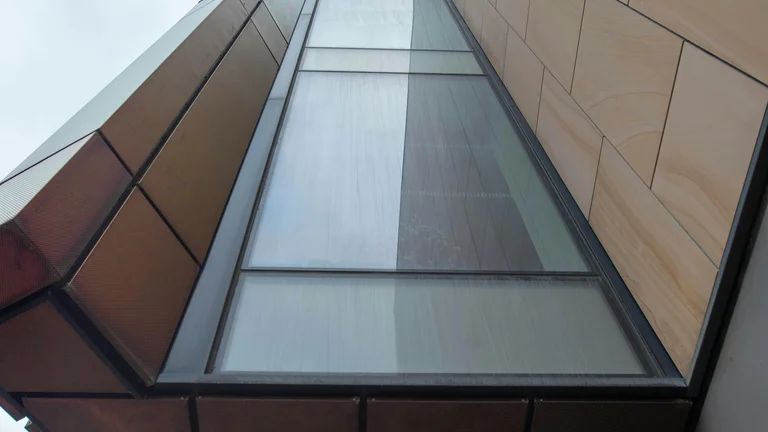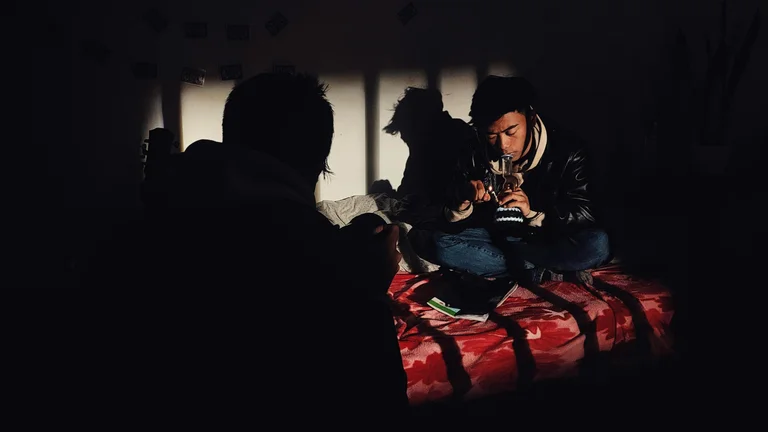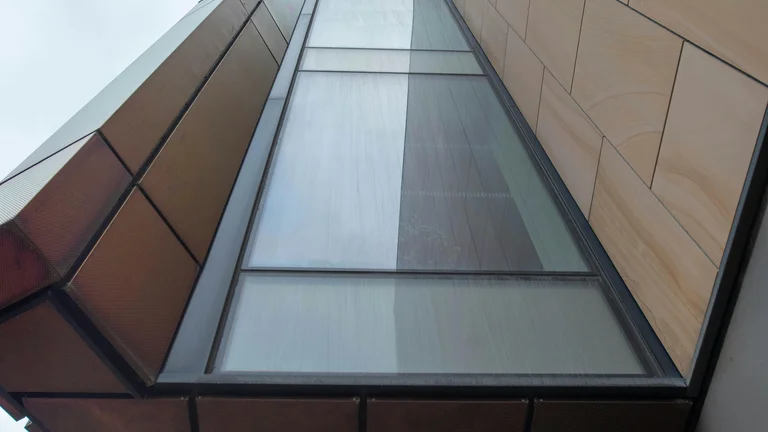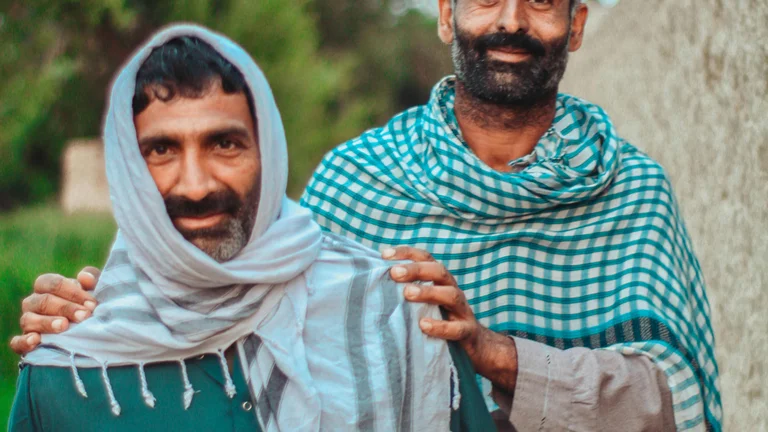Jeju Island: The Iconic Backdrop of KDrama Romance and Fantasy

Jeju Island is arguably the most famous filming location chosen by Kdrama producers for its unmatched natural beauty and diverse landscapes. Known for its volcanic terrain, stunning beaches, lush forests, and iconic stone sculptures called "dol hareubangs," Jeju infuses the romantic and fantasy genres of Korean dramas with an ethereal charm that deeply resonates with viewers. The island’s multiple filming sites allow drama creators to showcase a wide variety of atmospheres ranging from tranquil rural settings to dramatic coastal cliffs. This diversity makes Jeju Island pivotal in shaping memorable scenes and emotional moments in Kdramas.
For instance, the drama "Secret Garden" famously employed Jeju’s Seopjikoji coastline to capture the breathtaking seaside scenes where the lead characters’ relationship unfolds against the crashing waves and expansive skies. Seopjikoji is a place of remarkable raw beauty featuring dramatic rock formations and open fields sprinkled with vibrant yellow canola flowers during spring. Such visuals contribute not only to the story’s ambiance but also imprint lasting imagery in the viewer's mind.
Beyond Seopjikoji, Jeju's Manjanggul Cave provides a mystical underground setting used in several dramas to emphasize secrecy, adventure, or supernatural elements. Exploring inside this lava tube cave with its curving passages and stark, dark textures adds an unusual, almost otherworldly dimension, enhancing plotlines that lean towards fantasy or thriller genres.
Jeju also offers architectural charm, with traditional Jeju stone houses providing unique backdrops that contrast modern urban scenes often highlighted in Kdramas. These houses, characterized by low stone walls and thatched roofs, invoke feelings of nostalgia and culture, enriching historical or family-based storylines.
The island is equally famous for its scenic waterfalls and hiking trails across volcanic peaks like Hallasan Mountain — the tallest mountain in South Korea. The invigorating landscapes serve not only as spectacular visual components but also as metaphors of personal journeys, struggles, and triumphs the characters endure.
Noteworthy is the fact that Jeju Island continues to inspire tangible impacts beyond entertainment. Tourism to Jeju has surged significantly due to its exposure in popular Kdramas. Visitors flock to iconic sites for photo opportunities and immersive experiences, boosting local economies and encouraging cultural exchange. This dynamic illustrates how filming locations in Kdramas are not simply passive settings but active participants in storytelling and audience engagement.
In addition to its natural allure, Jeju offers film-friendly infrastructure including well-maintained roads and accommodations specifically catering to production teams and tourists. These logistical advantages make it a preferred destination for long-term filming projects requiring diverse settings within a compact geographic area.
In summary, Jeju Island exemplifies an ideal Kdrama filming location combining breathtaking scenery, cultural depth, and versatility. Its inclusion elevates narrative aesthetics significantly, creating iconic scenes beloved by fans worldwide.
Gyeongbokgung Palace: Historical Grandeur in Modern Storytelling
Gyeongbokgung Palace, situated in Seoul, offers a majestic visual canvas that bridges Korea’s rich history with contemporary storytelling in Kdramas. This royal palace, originally built in 1395 during the Joseon Dynasty, stands as an architectural masterpiece featuring extensive courtyards, intricate wooden structures, and ornate painted designs that capture the essence of Korean heritage. Its use in period dramas (sageuks) is essential, providing authenticity and grandeur to royal settings and political intrigue narratives.
Many beloved historical dramas such as “Moon Embracing the Sun” and “Jewel in the Palace” prominently showcase Gyeongbokgung’s expansive throne halls, pavilions, and beautiful gardens. These locations become living backdrops where dynastic struggles, romance, and cultural rituals are brought vividly to life. The palace’s spacious layout also allows filmmakers to stage large battle scenes and royal gatherings, essential for depicting court life’s complexities.
What makes Gyeongbokgung particularly impressive is the careful restoration efforts that maintain its original aesthetics while allowing accessibility to film crews. The balance between preserving historical integrity and facilitating artistic expression makes it an invaluable resource for high-production-value Kdramas.
Aside from its architectural splendor, the palace grounds feature seasonal beauty such as cherry blossoms in spring and vibrant foliage in autumn, which drama creators exploit to complement emotional beats in stories. Such natural enhancements enrich visual storytelling by aligning character developments with surrounding environments, deepening emotional resonance.
Another intriguing aspect is the frequent incorporation of traditional Korean costuming and palace etiquette, filmed directly within Gyeongbokgung. This immersive context educates viewers indirectly about Korea’s cultural legacy, contributing to Kdramas’ global appeal by blending entertainment with cultural exposure.
Visitors to Seoul often seek guided tours of Gyeongbokgung inspired by their favorite dramas. These tours highlight key filming spots within the palace, supporting cultural tourism and creating tangible connections between viewers and physical locations depicted onscreen.
To accommodate its role as a film location, the palace administrators collaborate closely with production teams to coordinate filming schedules around public visiting hours, ensuring preservation and minimizing disruption. Such coordination underscores the importance of Gyeongbokgung not only as a cultural icon but also as an industry partner in Korean media production.
In essence, Gyeongbokgung Palace symbolizes the fusion of historical grandeur and modern narrative craft intrinsic to many Kdramas. Its presence anchors fantastical or romantic plotlines in genuine cultural settings, enhancing authenticity and visual richness.
Namiseom Island: Romantic Escapes and Seasonal Beauty
Namiseom Island, a crescent-shaped half-moon island located near Seoul, has become synonymous with romantic Kdramas, particularly after its iconic role in the worldwide hit "Winter Sonata." The island's tree-lined paths, especially those adorned with Norway spruces, provide an idyllic and intimate framework for scenes of love, memory, and nostalgia.
The appeal of Namiseom lies in its versatile landscapes that are visually attractive across different seasons. In spring and summer, flowering trees and lush greenery create lively and warm atmospheres. Autumn transforms the island into a fiery spectacle with a palette of red, orange, and yellow leaves, while winter blankets the entire area with snow, evoking quiet introspection and warmth amid cold surroundings.
Namiseom’s relatively compact size and pedestrian-friendly layout make it ideal for filming romantic strolls, emotional reunions, and quiet moments of reflection. It conveys a tangible sense of seclusion while remaining accessible to visitors, bridging on-screen fantasy with real-life experience.
Besides the famous tree lanes, Namiseom offers cultural attractions such as art installations, traditional Korean performances, and quaint cafes. These elements occasionally appear in various Kdramas, adding layers of local charm and lifestyle authenticity.
Because of its role in "Winter Sonata," Namiseom has evolved into a pilgrimage site for Kdrama fans from across Asia and beyond. This phenomenon highlights the powerful impact a location can have on tourism and cultural exchange through media.
From a production standpoint, Namiseom’s management supports filming activities by providing logistical assistance including access control, parking, and location scouting services. This cooperation allows drama crews to efficiently execute complex shoots in natural settings with minimal environmental disturbance.
The island’s accessibility via ferry from the mainland adds an interesting logistical dimension to shoots, allowing filmmakers to depict journeys that enhance story realism. Additionally, nighttime shoots under softly illuminated trees provide enchanting visuals frequently used in romantic or emotionally charged scenes.
Overall, Namiseom Island remains an essential Kdrama destination offering timeless romance framed within distinctive seasonal changes and scenic tranquility. Its influence on popular culture continues to foster a durable connection between Korea’s natural beauty and its entertainment industry.
Petite France: European Charm in Korean Dramas
Petite France is a unique cultural village located near Gapyeong, northeast of Seoul, designed to emulate the ambiance of a small French village. This locale adds freshness and cosmopolitan flair to Kdramas, standing out from typical Korean urban or nature settings. It perfectly suits dramas featuring foreign themes, art, and whimsical narratives.
Featuring vibrant colored buildings, cobblestone paths, ornate lamps, and European-style statues, Petite France creates picturesque scenes reminiscent of Central Europe. Productions such as "My Love from the Star" and "Secret Garden" incorporated Petite France to intensify story elements involving exoticism, fantasy, or international flair.
The village includes attractions like the Saint-Exupéry Memorial Hall, dedicated to the author of "The Little Prince," enriching filming with literary symbolism and thematic depth. These cultural layers appeal to audiences appreciating intricate references and artistic dimensions.
Besides serving as a backdrop, Petite France offers indoor performance halls and exhibition spaces utilized by drama productions for concert or show scenes. This capability adds versatility, allowing smooth transitions between outdoor scenic shots and controlled interior filming.
The village’s accessibility from Seoul within an hour by car also encourages frequent location use in dramas requiring European-style settings without leaving Korea. It represents a creative solution for production budgets and logistics while maintaining high scenic value.
Petite France attracts many tourists inspired by Kdramas, contributing to cultural tourism growth in the Gapyeong area. Visitors enjoy combining their stop here with other nearby filming locations such as Nami Island and Garden of Morning Calm, crafting comprehensive thematic tours.
Managing staff collaborate proactively with film crews to coordinate schedules and preserve the village environment, ensuring sustainable usage of this tourist and filming resource.
To summarize, Petite France distinguishes itself by providing an imaginative space that integrates European charm seamlessly with Korean storytelling, expanding the aesthetic horizons of Kdramas and their narratives.
Garden of Morning Calm: A Living Canvas for Emotional Narratives
The Garden of Morning Calm is a horticultural oasis nestled in Gapyeong, known for its meticulously landscaped gardens that showcase Korea’s natural flora alongside artistic plant compositions. This setting interacts deeply with Kdramas focusing on themes of healing, reflection, and personal growth.
Its vast array of themed garden sections includes traditional Korean garden design mixed with contemporary elements, creating varying ambiances suitable for character introspection or poignant moments. This unique combination makes the garden a favored choice for romantic and melodrama genres.
One notable example is its seasonal lighting festivals, where the entire garden sparkles with thousands of lights, providing magical atmospheres for night scenes. These visually stunning effects heighten emotional intensity and offer memorable cinematography opportunities.
The garden’s diversity extends to water features, stone pathways, and open lawns that filmmakers utilize creatively to symbolize various narrative states such as peace, conflict, or transformation. Each section acts almost like an outdoor set designed to enhance storytelling organically.
Because of its popularity, the Garden of Morning Calm includes guided exploration routes highlighting notable filming spots. This approach helps fans connect more deeply with the drama’s visual language and appreciate subtleties in location choice.
Practical foundations such as ample parking, signage, and visitor facilities also support the logistics of filming large-scale dramas, enabling smooth coordination between production demands and public access.
Moreover, the garden often hosts cultural events and workshops encouraging community involvement and education around horticulture and environmental awareness, indirectly reinforcing the values sometimes portrayed in Kdramas filmed on-site.
Overall, the Garden of Morning Calm offers a uniquely contemplative and visually rich environment that complements Kdramas’ emotional narratives, blending natural beauty with symbolic depth.
Busan’s Haeundae Beach: Dynamic Urban Coastline in Contemporary Kdramas
Haeundae Beach in Busan portrays a vibrant coastal city atmosphere frequently depicted in modern Kdramas that revolve around youthful and social themes. The beach’s expansive sandy shore, bustling boardwalk, and luxurious nearby hotels provide settings for lively conversation scenes, dramatic encounters, and festive events.
Busan, South Korea’s second-largest city, combines natural harbor views with urban skylines, allowing dramas to highlight contrasts between personal introspection near the water and the fast-paced city life behind. Kdramas like "Love 911" and "Fight for My Way" effectively used Haeundae to underline these juxtapositions.
The beach area also hosts numerous cultural festivals such as the Busan International Film Festival and sand sculpture contests, occasionally integrated into Kdramatic plots to add authenticity and local color. These events offer filmmakers real-time activity to blend non-fictional elements with scripted drama.
Haeundae is also a hotspot for nighttime scenes, thanks to its illuminated skyline, neon-lit streets, and the reflection of lights on water. This setting enhances atmosphere especially in stories involving nightlife, romance, or urban challenges.
Surrounding attractions like Dongbaek Island and Centum City shopping complex introduce additional layers of urban and natural interaction, expanding filming possibilities within a limited radius. This geographic mix maximizes production efficiency while delivering diverse visual experiences.
Infrastructure supporting film crews includes easy transportation access via subway and roads, a variety of accommodation options, and local government support promoting Busan as a film-friendly city.
In practical terms, Busan’s combination of lively beach culture and modern urbanity continues to make it a compelling filming location that appeals to a broad audience and meets diverse production requirements.
In conclusion, Haeundae Beach offers a naturally cinematic urban coastal environment that enriches contemporary Kdramas with energy, vibrancy, and cultural relevance.
Gamcheon Culture Village: Colorful Streets and Artistic Vibrancy
Gamcheon Culture Village, often dubbed the “Machu Picchu of Busan,” is celebrated for its brightly painted houses, mosaic stairways, and eclectic street art. This artistic neighborhood brings a distinctive visual identity to Kdramas focused on community, creativity, and resilience.
Kdramas or scenes that feature Gamcheon often emphasize themes of transformation, hope, or nostalgia, as the village’s layered history and modern artistic revival serve as metaphors for personal and social evolution. Its winding alleys and colorful facades provide rich textures that enliven backgrounds without overpowering narratives.
The village contains interactive art installations and quaint galleries that appear in plots involving character discovery or cultural exploration. The vibrancy naturally fosters uplifting or contemplative moods depending on scene direction.
Importantly, Gamcheon’s preservation as a cultural site means that most filming is conducted respectfully, allowing local artisans and residents to participate or benefit indirectly through increased visibility and tourism.
Production teams often leverage Gamcheon’s high vantage points for panoramic shots, capturing both the village’s charming chaos and the surrounding Busan landscape, enhancing story scale and visual storytelling uniqueness.
Gamcheon’s accessibility from central Busan and well-established visitor infrastructure enable convenient scheduling of complex shoots involving multiple locations within the village.
Its appeal is maintained by constant evolution as local artists add new pieces, keeping the scenery fresh and relevant for future productions.
Hence, Gamcheon Culture Village stands as a vibrant, colorful symbol within Kdramas that celebrates creativity, history, and community, all conveyed through captivating visual storytelling.
Table of Key Filming Locations and Their Characteristics
| Location | Primary Kdrama Genres | Visual Characteristics | Notable Dramas | Unique Features |
|---|---|---|---|---|
| Jeju Island | Romance, Fantasy, Adventure | Volcanic landscapes, Coastal cliffs, Traditional stone houses | Secret Garden, Goblin | Seopjikoji coast, Manjanggul Cave |
| Gyeongbokgung Palace | Historical, Political drama, Romance | Traditional Korean royal architecture, Large courtyards, Seasonal flora | Moon Embracing the Sun, Jewel in the Palace | Authentic royal venues, Cultural heritage |
| Namiseom Island | Romance, Nostalgia, Family drama | Tree-lined paths, Seasonal foliage, Pedestrian-friendly | Winter Sonata, Hospital Playlist | Seasonal beauty, Romantic strolls |
| Petite France | Fantasy, Romantic comedy, Youth drama | European village architecture, Colorful buildings, Art installations | My Love from the Star, Secret Garden | European theme in Korea, Cultural exhibitions |
| Garden of Morning Calm | Romance, Melodrama, Healing | Themed gardens, Water features, Seasonal festivals | Goblin, Something in the Rain | Lighting festivals, Symbolic landscapes |
| Haeundae Beach (Busan) | Urban, Youth, Romance, Drama | Coastal cityscape, Beach, Night skyline | Love 911, Fight for My Way | Beach culture, Urban festivals |
| Gamcheon Culture Village | Drama, Slice of life, Coming of age | Colorful houses, Street art, Panoramic views | Reply 1988, Fight for My Way | Artistic community, Cultural preservation |
Practical Tips for Visiting KDramas’ Iconic Filming Locations
- Plan visits during off-peak hours or seasons to avoid crowds and enjoy unobstructed views ideal for photography and authentic atmosphere.
- Check local guidelines as some sites require permission or tickets to access filming spots, ensuring a respectful visit while preserving location integrity.
- Utilize guided tours themed around Kdramas which often provide rich historical and production anecdotes, enhancing the experience.
- Carry appropriate gear like comfortable walking shoes for island trails or outdoor gardens to navigate terrain safely and comfortably.
- Support local economies by purchasing souvenirs or dining at nearby establishments featured in or inspired by Kdramas.
In-Depth Case Study: How Filming Locations Influence KDrama Popularity
The selection of a filming location deeply affects not only visual appeal but also audience engagement, drama ratings, and tourism trends. For example, after the massive success of "Winter Sonata," Namiseom Island saw a dramatic increase in tourist visits from Japan and other Asian countries. This surge not only transformed Namiseom economically but also promoted cross-cultural appreciation and awareness of Korean landscapes.
Similarly, Jeju Island’s repeated appearances in high-rating dramas such as "Goblin" and "Legend of the Blue Sea" contributed to its reinvention as a romantic getaway on the international tourism map. The natural and cultural heritage of Jeju combined with its Kdramatic identity provide a multi-layered appeal that resonates emotionally and culturally with viewers.
Moreover, dramas set in historical locations like Gyeongbokgung Palace stimulate curiosity about Korean history and art, encouraging viewers to explore these facets offline. This educational aspect extends Kdramas' impact beyond entertainment.
On the production side, choosing iconic locations brings challenges such as negotiating filming rights, coordinating schedules to minimize tourist disruption, and ensuring preservation standards. However, these efforts are often rewarded with elevated production quality and increased fan interest.
Internationally, the global reach of streaming platforms has meant that filming locations serve as virtual travel destinations, enticing fans worldwide. This dynamic generates economic and cultural benefits for South Korea, establishing a sustainable synergy between media and tourism industries.
Consequently, the strategic selection and management of filming locations play a crucial role in shaping Kdramas' legacy, audience connection, and broader socio-economic effects.
Analysis of Visual Storytelling Techniques Using Locations in KDramas
Filming locations in Kdramas do more than present pretty backgrounds. Directors and cinematographers use these spaces to foster mood, support narrative arcs, and develop characters. For example, wide shots of Jeju’s open fields often signify freedom, escape, or new beginnings, while confined palace interiors in Gyeongbokgung create tension, hierarchy, and tradition.
Color palettes from natural elements—autumn leaves, ocean blues, or pastel flower gardens—are leveraged to reflect or contrast characters’ internal states, influencing audience emotional response subconsciously. Nighttime lighting and shadows in locations like Gamcheon Culture Village or Haeundae Beach enhance mystery or intimacy.
Moreover, transitions between locations often mark story progression. A character moving from a bustling cityscape to a serene garden can visually illustrate transformation or internal conflict without expository dialogue.
In this way, locations act as silent storytellers. The interplay of spatial design, natural light, and cultural symbolism blend to create immersive worlds that invite viewers to experience the story on multiple sensory levels.
Examples of creative use include the juxtaposition of traditional stone walls of Gyeongbokgung against modern outfits to symbolize tension between past and present, or framing romantic conversations amidst falling cherry blossoms on Namiseom Island highlighting fleeting beauty.
Understanding these techniques enriches viewer appreciation and encourages production teams to thoughtfully harness locations, elevating Kdramas artistically and emotionally.
FAQ - Most Beautiful Filming Locations Featured in KDramas
Which Kdrama filming location is most famous for romantic scenes?
Namiseom Island is widely recognized for romantic scenes, especially after its prominent feature in the popular drama 'Winter Sonata,' with its iconic tree-lined paths and seasonal beauty enhancing emotional storytelling.
Can tourists visit the filming spots featured in Kdramas?
Yes, many Kdrama filming locations such as Jeju Island, Gyeongbokgung Palace, and Gamcheon Culture Village are open to the public, allowing fans to visit, take photos, and participate in tours related to their favorite dramas.
What makes Gyeongbokgung Palace ideal for historical dramas?
Gyeongbokgung Palace provides authentic royal architecture, grand courtyards, and carefully restored interiors that offer historical accuracy and grandeur necessary for period dramas set during the Joseon Dynasty.
How do filming locations impact the popularity of Kdramas?
Filming locations contribute heavily to visual appeal and emotional connection, often driving tourism and cultural interest. Popular sites become iconic symbols related to beloved dramas, thus amplifying audience engagement.
Are there any European-style filming locations within Korea featured in Kdramas?
Yes, Petite France near Gapyeong is a French cultural village offering European-style architecture that appears in Kdramas to add exotic and whimsical atmospheres without leaving Korea.
Kdramas feature stunning filming locations like Jeju Island, Gyeongbokgung Palace, and Namiseom Island, which enrich storytelling with authentic natural beauty, historic grandeur, and cultural depth. These diverse sites play vital roles in narrative development and fan engagement while boosting Korea’s cultural tourism globally.
Through meticulous selection and creative use, the most beautiful filming locations in Kdramas offer more than visual appeal; they intertwine natural splendor, cultural heritage, and narrative function. From the volcanic shores of Jeju Island to the historical elegance of Gyeongbokgung Palace, each site deepens storytelling, enriches character development, and builds immersive worlds that captivate audiences. These places not only shape Kdrama aesthetics but also drive tourism and cultural exchange, broadening Korea’s global presence. The diverse settings reinforce Kdramas’ ability to balance tradition with modernization, fantasy with reality, and intimacy with grandeur, making filming locations indispensable components of their enduring success and worldwide popularity.






